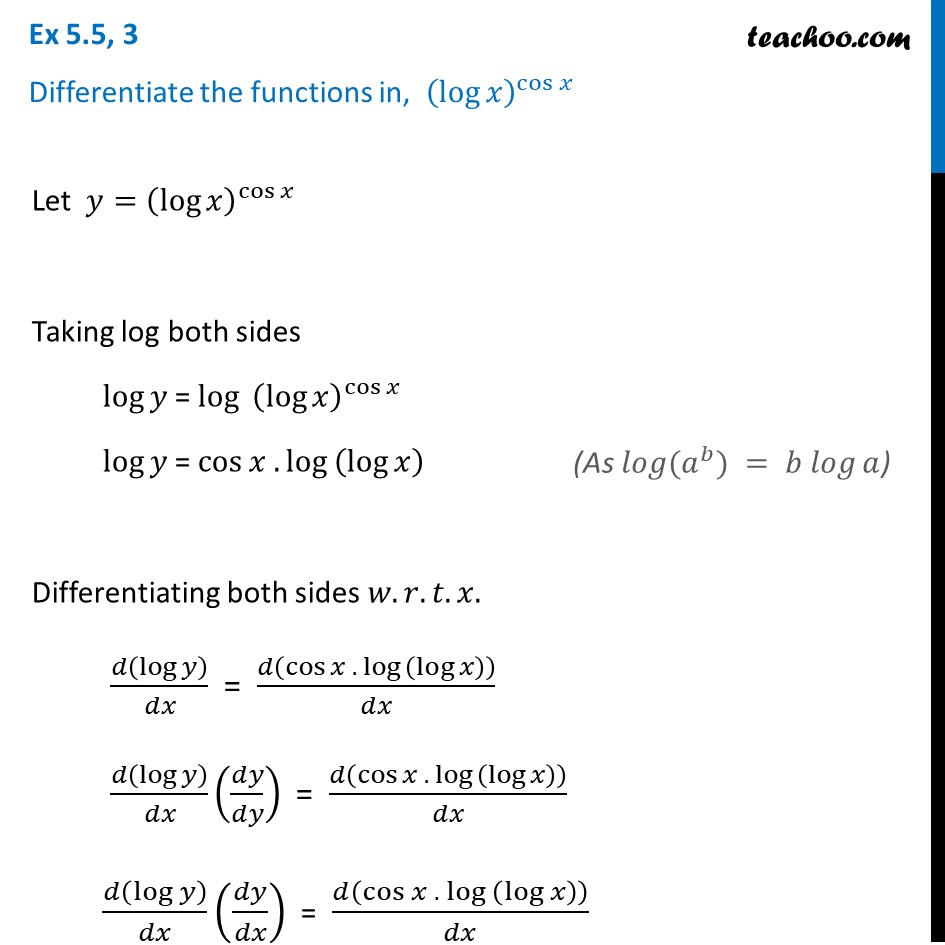

Let’s call the function in the argument g(x), which means: Ln(2x) is in the form of the standard natural log function ln(x), except it does not have x as an argument, instead it has another function of x (2x). Using the chain rule to find the derivative of ln(2x) To perform the differentiation, the chain rule says we must differentiate the expression as if it were just in terms of x as long as we then multiply that result by the derivative of what the expression was actually in terms of (in this case the derivative of 2x).

This means the chain rule will allow us to perform the differentiation of the function ln(2x). We know how to differentiate ln(x) (the answer is 1/x).



 0 kommentar(er)
0 kommentar(er)
